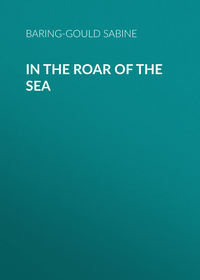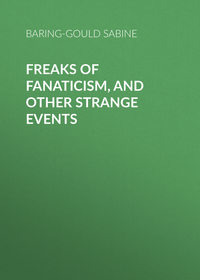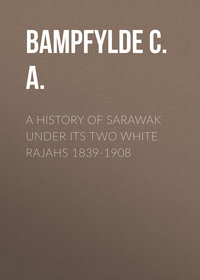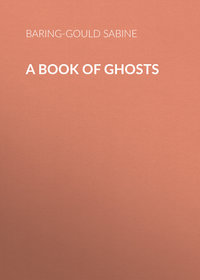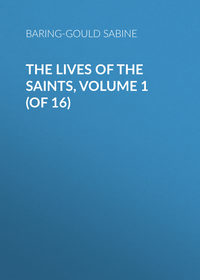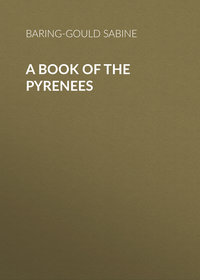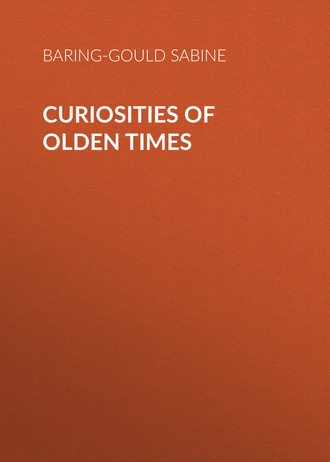 полная версия
полная версияCuriosities of Olden Times
Neither Arab nor European alchemist, nor Buddhist recluse, dreamed that the stone that gave light, that nourished, that rejoiced, that enriched, was the sun shining above their heads. The conception of the sun as a stone was so old, so rolled and rubbed down, that they had no notion whence it came. The idea remained, and influenced their minds strangely; but it never occurred to them to ask whence the idea was derived.
There is something pitiful in looking at the wasted lives of those old seekers, bowed over their crucibles, inhaling noxious vapours, wearing out the nights in fruitless experiment; but, like all history, that of the alchemists teaches us a lesson – to look up instead of looking down – a lesson to seek happiness, wealth, contentment, in the simple and not the complex, in light instead of in darkness.
I believe that this is the only one of my articles in which I have drawn a moral, but the moral is so obvious that it would have been inexcusable had I passed it over. But I know that as a child I resented the applications in Æsop’s Fables, and perhaps my reader will feel a like objection to having a moral appended to this essay. That I may dismiss him with a smile instead of a frown, I will close with a copy of verses extracted by me some thirty and more years ago, from – I think – a Cambridge University undergraduates’ magazine, verses probably new to my readers; but as they enforce the same moral in a perfectly fresh and charming manner, and as they deserve to be rescued from oblivion, I conclude with them:
I was just five years old, that December,And a fine little promising boy,So my grandmother said, I remember,And gave me a strange-looking toy:In its shape it was lengthy and rounded,It was papered with yellow and blue,One end with a glass top was bounded,At the other, a hole to look through.‘Dear Granny, what’s this?’ I came, crying,‘A box for my pencils? but see,I can’t open it hard though I’m trying,O what is it? what can it be?’‘Why, my dear, if you only look through it,And stand with your face to the light;Turn it gently (that’s just how to do it!),And you’ll see a remarkable sight.’‘O how beautiful!’ cried I, delighted,As I saw each fantastic device,The bright fragments now closely united,All falling apart in a trice.Times have passed, and new years will now find me,Each birthday, no longer a boy,Yet methinks that their turns may remind meOf the turns of my grandmother’s toy.For in all this world, with its beauties,Its pictures so bright and so fair,You may vary the pleasures and dutiesBut still, the same pieces are there.From the time that the earth was first founded,There has never been anything new —The same thoughts, the same things, have redoundedTill the colours have pall’d on the view.But – though all that is old is returning,There is yet in this sameness a change;And new truths are the wise ever learning,For the patterns must always be strange.Shall we say that our days are all weary?All labour, and sorrow, and care,That its pleasures and joys are but dreary,Mere phantoms that vanish in air?Ah, no! there are some darker pieces,And others transparent and bright;But this, surely, the beauty increases, —Only —stand with your face to the light.And the treasures for which we are yearning,Those joys, now succeeded by pain —Are but spangles, just hid in the turning;They will come to the surface again.B.So the old ideas, old myths, are turned and turned about, and form new combinations, and are ever evolving fresh beauties, and teaching fresh truths. Perhaps in the consideration of these ancient myths, and seeing their progressive modifications, their breaking up, their coalitions, we may find the fresh application of the old saw, that there is nothing new under the sun.
THE END1
Jones, Trad. N. American Indians (1830), vol. iii. 175.
2
Original edition in Latin. A translation by John Campbell, LL.D., under the title of Hermippus Redivivus, London, 1743. A second edition much enlarged, under the title Hermippus Redivivus, or the Sage’s Triumph over Old Age and the Grave, London, 1749, 8vo. We have seen also an Italian translation. That from which we quote is the German edition.
3
It is possible that, by the engraver’s fault, the L in the last inscription may have been substituted for an X.
4
Ἔστρεψεν τὰ ταβλία τῶν πλακουνταρίων.
5
Εἷς φουσκάριος.
6
Εἷς Θεὸς, ἀββᾶ Συμεὼν, εἰς τὸν χεῖρα σου θυμιᾷς.
7
Τί ἐστιν ἔξηχε, ἴδε, οὐκ εἰμὶ ἐγὼ μόνος ἀπέργης.
8
Θέλων οὖν ὁ Ὅσιος ἀναλῦσαι τὴν οἰκοδομὴν αὐτοῦ, ἵνα μὴ θριαμβεύσῃ αὐτὸν, ἐν μιᾷ κοιμωμένης τῆς γυναικὸς αὐτοῦ μόνης, κᾀκείνου προβάλλοντος οἶνον, ἐπέβη πρὸς αὐτὴν ὃ ἀββᾶς Συμεὼν, καὶ ἐχηματίσατο ἀποδύεσθαι τὸ ἱμάτιον αὐτοῦ, κ.τ.λ.
9
Ὥστε ἔστιν ὅτε ἔβαλλον τὰς χεῖρας αὐτῶν τὰ ἄσεμνα γύναια εἰς τὸν κόλπον αὐτοῦ,καὶ ἐσίαινον, καὶ ἐκόπταζον, καὶ ἐγαργάλιζον αὐτόν.
10
Ἐβάσταζεν αὐτὸν μία προϊσταμενὴ, καὶ ἄλλη ἑλώριζεν αὐτόν.
11
Πολλάκις δὲ προσποιεῖσθαι καταφιλεῖν τὰς δούλας. No wonder if one of them said, “Ο Σαλὸς Συμεὼν ἐβιάςατό με.” The maid’s mistress indignantly scolded Symeon, who replied with a smile, “Ἄφες, ἄφες, ταπεινὴ, ἄρτι γεννᾶ σοι, καὶ ἔχεις μικρὸν Συμεών.”
12
Σειρὰν σαλσικίων.
13
Σιλίγνια, καὶ πλακοῦντας, καὶ σφαίρια, καὶ ὀψάρια, καὶ οἰνάρια διάφορα, ψαθύρια, καὶ γλυκὺ, καὶ ἁπλῶς ὅσα πάντα ἔχει ὁ βίος λιμβά.
14
Ἔστι γὰρ ὅτε καὶ τοῦτο ἔλεγε πρὸς μίαν τῶν ἑταιρίδων· θέλεις ἔχο σε φίλην καὶ δίδω σοι ἑκατὸν ὁλοκοτίνα.
15
Both are published in the Acta Sanctorum for June, T.I., pp. 237-260, with notes by Papebroeck, the Bollandist.
16
“Monachus aspectu venerabilis, barba prolixa, corpore nudus, capillis canus.” This old monk was St. Luke the Stylite, appearing in vision.
17
“Unus – cum gravi baculo ascendens ad eum, ipsum graviter ac dure cædens, de ecclesiæ trullo descendere fecit, cum multa festinantia et furore.” —Fr. Barth.
18
The biographer thinks a dolphin must have bitten his cords, and thus freed him.
19
A blending is a changeling, or one who is half troll, half human.
20
They form a huge ancient moraine.
21
It much resembles the beautiful Marjelen Sea, familiar to the visitor to Aegischhorn.
22
The writer has been over this portion of the ground, and knows the course pursued.
23
It is not easy to make out what fell is meant. Possibly it may be the ridge called Thorir’s Head.
24
In another version one ball was gold, the other silver. I sent this story to Mr. Henderson, and it is included in the first edition of his Folklore of the Northern Counties, but omitted in the second.
25
The portion within brackets I got from a different informant. The first version was incomplete; the girls had forgotten how the ball was recovered. They forgot also what happened with the second ball.
26
Powel and Magnusson, Legends of Iceland (1864), p. 161.
27
Cf. Xenoph. Memor. IV. vii. 7.
28
The apocryphal Lith. 289.
29
“Solis gemma candida est, et ad speciem sideris in orbem fulgentes spargit radios” (Hist. Nat. xxxvi. 10, 67.)
30
Grimm, D. M. p. 665.
31
Hist. Anglic. i. 27. See also Gervase of Tilbury, cxlv., for an account of the subterranean world reached by the cave in the Peak of Derby.
32
Itin. Camb. i. 8.
33
See for account of the gem-lighted underworld, Mannhardt, Germ. Mythol. (1858), p. 447.
34
Egilson, Lex. poet. linguæ Sept. Men = monile, thesaurus, saxum, lapis.
35
Roger of Wendover’s Flowers of Hist., s.a. 1196. The story is an addition made to the original by Matthew Paris.
36
Spiegel, Anecdota Pâlica (1845), p. 53.
37
Benfy, Pantschatantra (1859), ii. p. 128.
38
Cf. Benfy, op. cit. i. p. 214.
39
Bababathra, 74, 6.
40
I said at the beginning of this article that the alchemists were right in believing the Philosopher’s Stone to be complex, made up of many metals. We know now that the germ idea of the stone is the sun, and the spectroscope allows us to analyse the sun’s light and discover in the solar atmosphere a multitude of metals and ingredients, in fusion.


